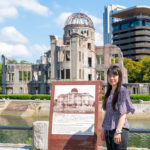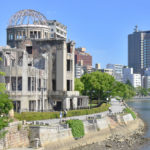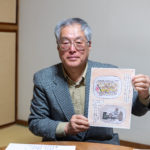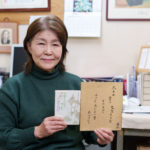Communicating the Thoughts and Words of Atomic Bombing Survivors; Hiroshima National Peace Memorial Hall for the Atomic Bomb Victims
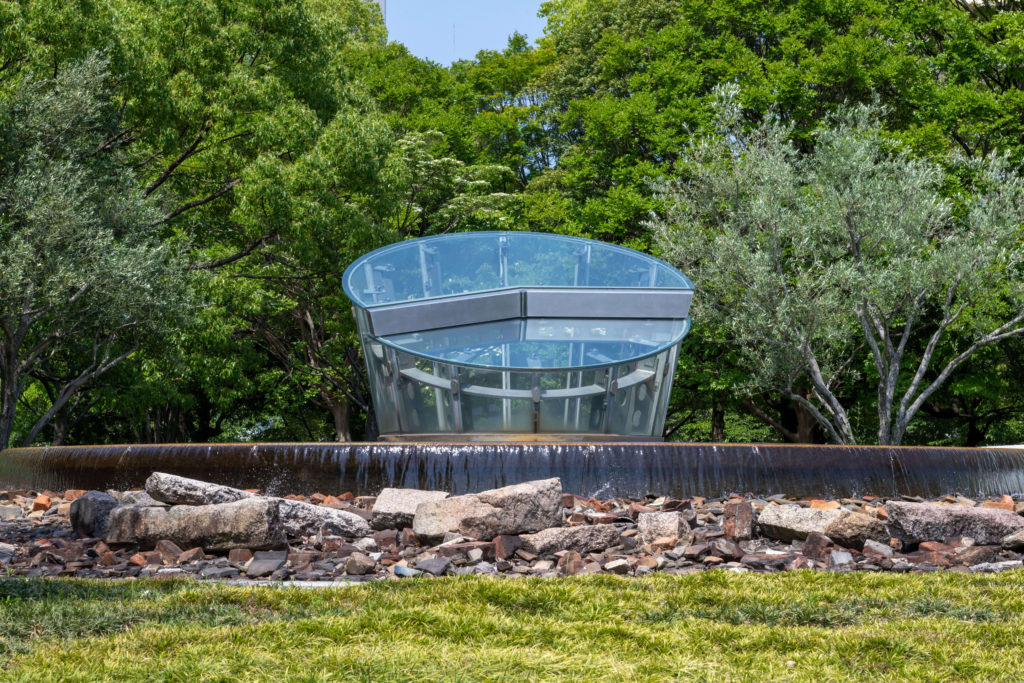
Did you know that, along a walk from the Hiroshima Peace Memorial Museum toward the Hiroshima Atomic Bomb Dome, next to a monument modeled after a clock, there appears a staircase leading down to a basement? Down these stairs is the Hiroshima National Peace Memorial Hall for the Atomic Bomb Victims, built in memory of those who perished in the atomic bombing.
Opened in August 2002, this national facility collects names and portraits of victims, surveys and organizes people’s experiences concerning the bombing, dispatches communicators who relate atomic bombing experiences, holds reading sessions, and produces testimonial videos, among other activities. While viewing names and portraits of victims of the bombing sent by bereaved families, visitors to the facility can learn from recorded experiences and testimonial videos what transpired on that day in Hiroshima.
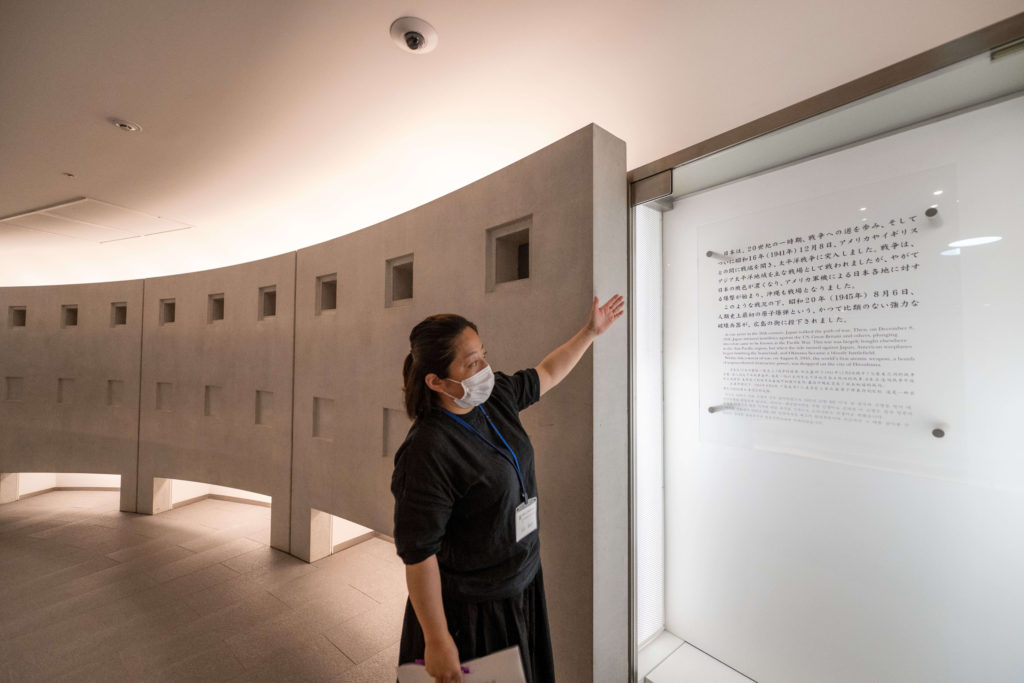
”The above-ground monument points to 8:15 am, the moment when the atomic bomb was dropped. Around the monument are debris from the bombing, burnt roof tiles, and fountains to mourn those who died searching for water,” says Mihoko Sakamoto, a guide at the Hiroshima National Peace Memorial Hall for the Atomic Bomb Victims.
Proceeding down the hall, a downward slope appears.
”This counterclockwise slope was built with the intent of taking people back in time to August 6, 1945. Along the way, materials on the history of the war leading up to the dropping of the atomic bomb and the reality of the bombing are displayed in order.”
Slowly descending the slope creates the sense of truly returning to Hiroshima on the day of the bombing.
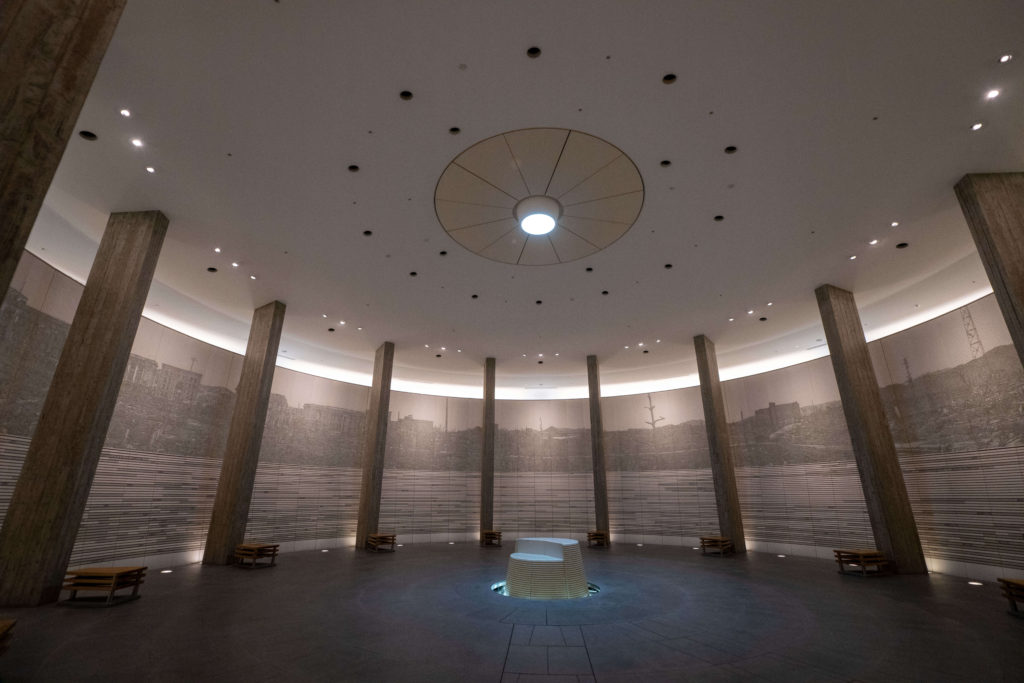
At the end of the slope are a large circular hall and a small monument.
”This is a space called the Hall of Remembrance. Offerings of water are made at this monument in memory of victims who died seeking water.”
The monument at the center is said to be directly below the monument above the ground. Looking across the hall, one sees Hiroshima at the time of the bombing, represented by about 140,000 small tiles covering the 360-degree entirety of the wall. The number of these tiles is the number of people who had died by the end of the year of the bombing. A visitor is left with the sense of standing stunned amid the Hiroshima that was reduced in an instant to a burnt field, with so many lives lost.
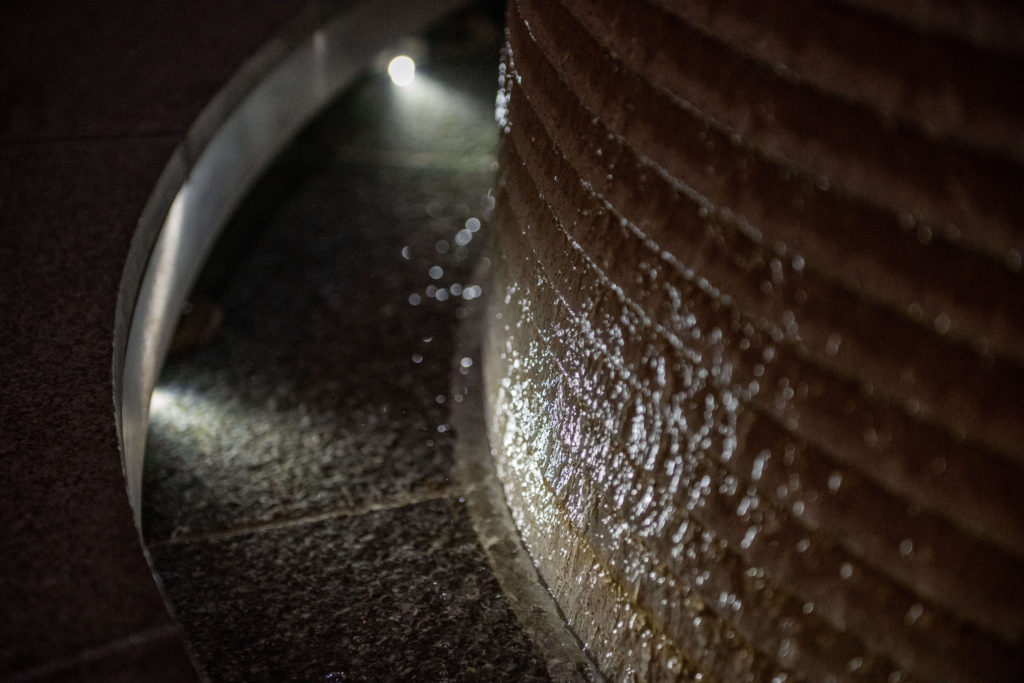
A silence surrounds the spacious hall. Only the sound of flowing water can be heard.
”This space commemorates the victims. We hope that, after seeing many things at the Hiroshima Peace Memorial Museum, visitors will come here and use the space to ponder the meaning of peace while mourning the victims.”
Some people sit on the benches for hours in order to settle their feelings.
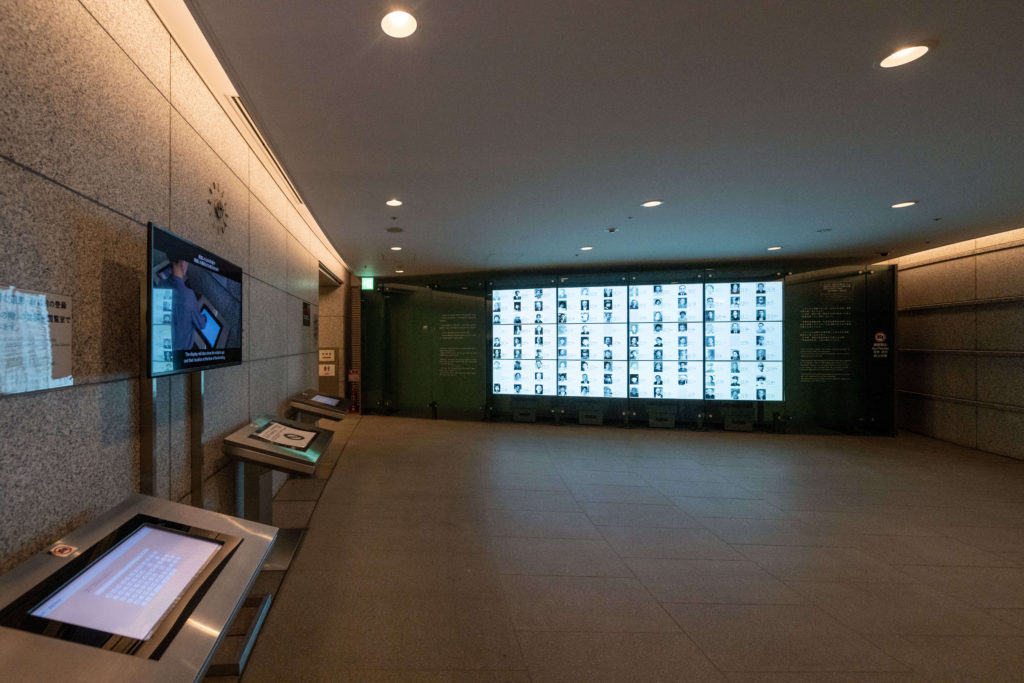
Leaving the Hall of Remembrance, there is an area showing the names and portraits of the atomic bombing victims on large monitors. Portraits and names provided by the bereaved families appear one after another, conveying a sense of how many lives were lost in the bombing. A number of visitors are said to come here to meet with family members who were lost to the bombing.
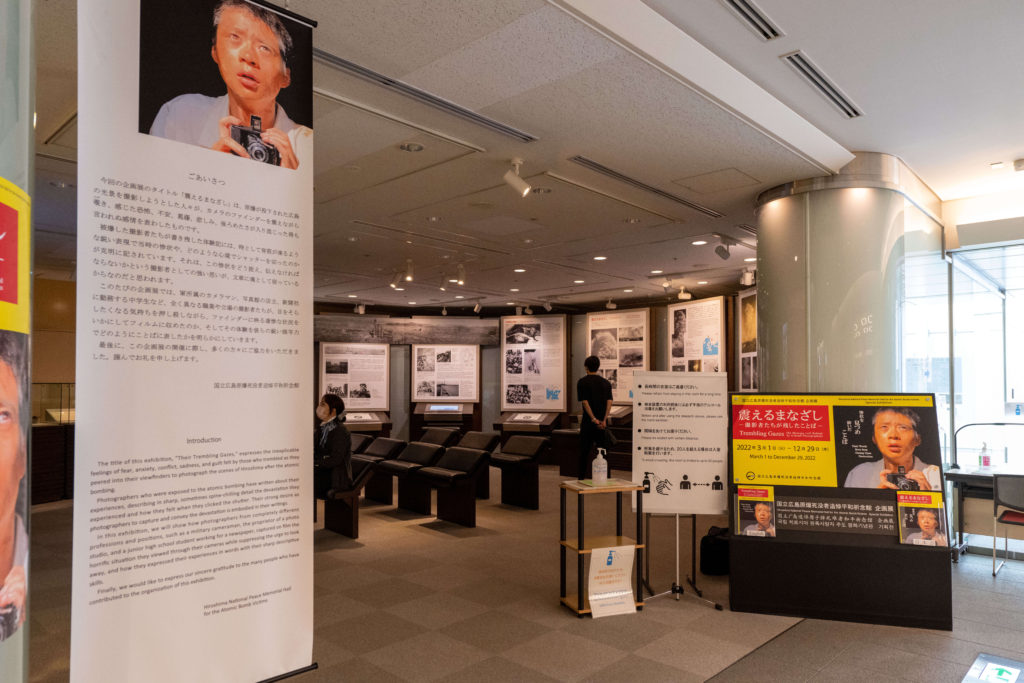
Special exhibitions are also held to show video works based on experiences in the bombing. In the reading room, visitors can freely browse records of experiences and testimonial videos by survivors.
”This is a place for reading, seeing, hearing, and quietly thinking. We hope that after learning about the reality of the atomic bombing, visitors will calmly reflect anew on peace and war.”
Hiroshima National Peace Memorial Hall for the Atomic Bomb Victims

TEL: 082-543-6271
Hiroshima Peace Memorial Park, 1-6 Nakajima-cho, Naka-ku, Hiroshima City
Hours: March 1 to July 31, September 1 to November 30: 8:30 to 18:00
August 1 to August 31: 8:30 to 19: 00 (August 5, 6: to 20:00)
December 1 to the end of February: 8:30 to 17:00
Closed: December 30, 31
Admission: Free
Website: https://www.hiro-tsuitokinenkan.go.jp/
Special Exhibition
Trembling Gazes: The Message Left Behind by A-bomb Photographers (Until December 29, 2022)
Special Exhibition website → https://www.hiro-tsuitokinenkan.go.jp/project/exhibition/
Tags associated with this article



